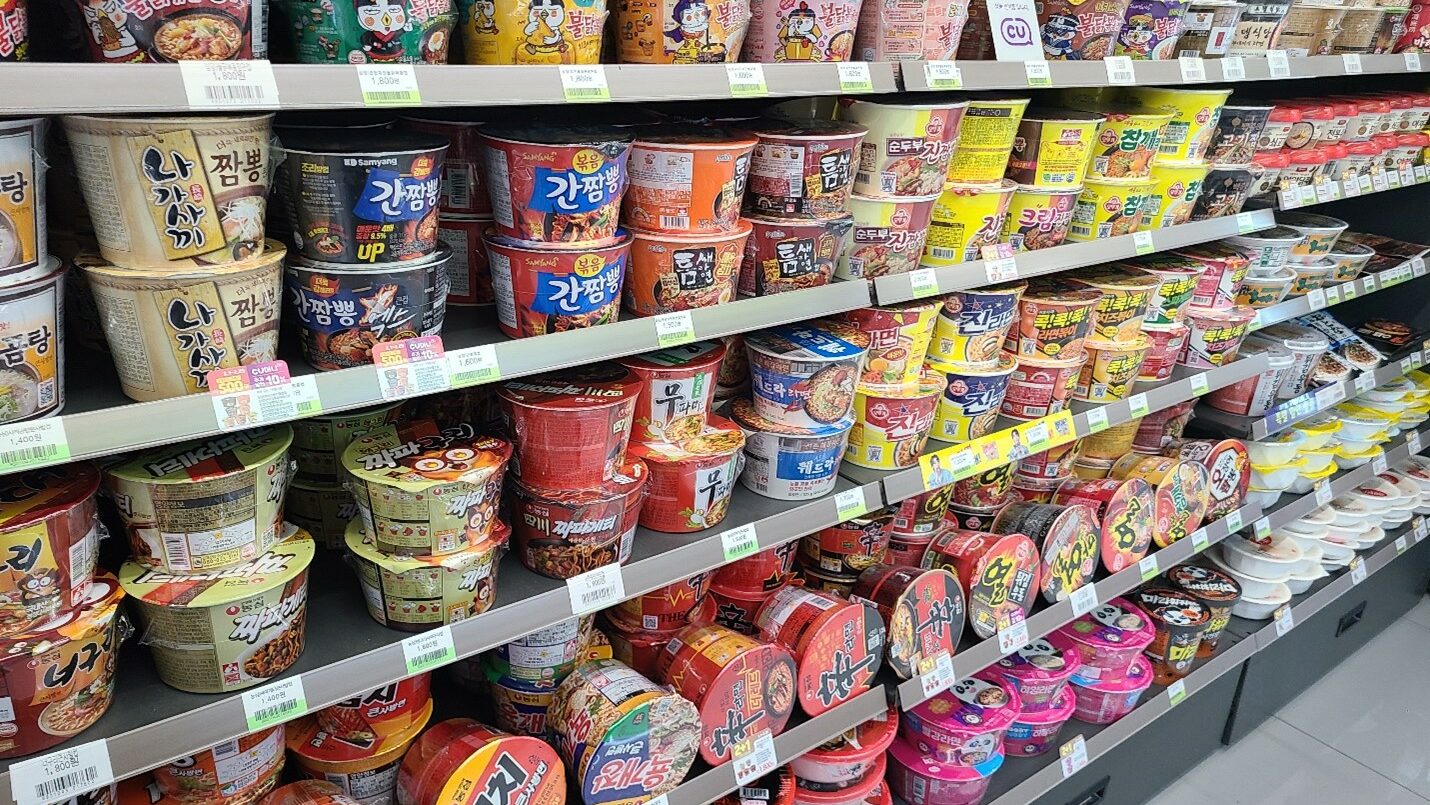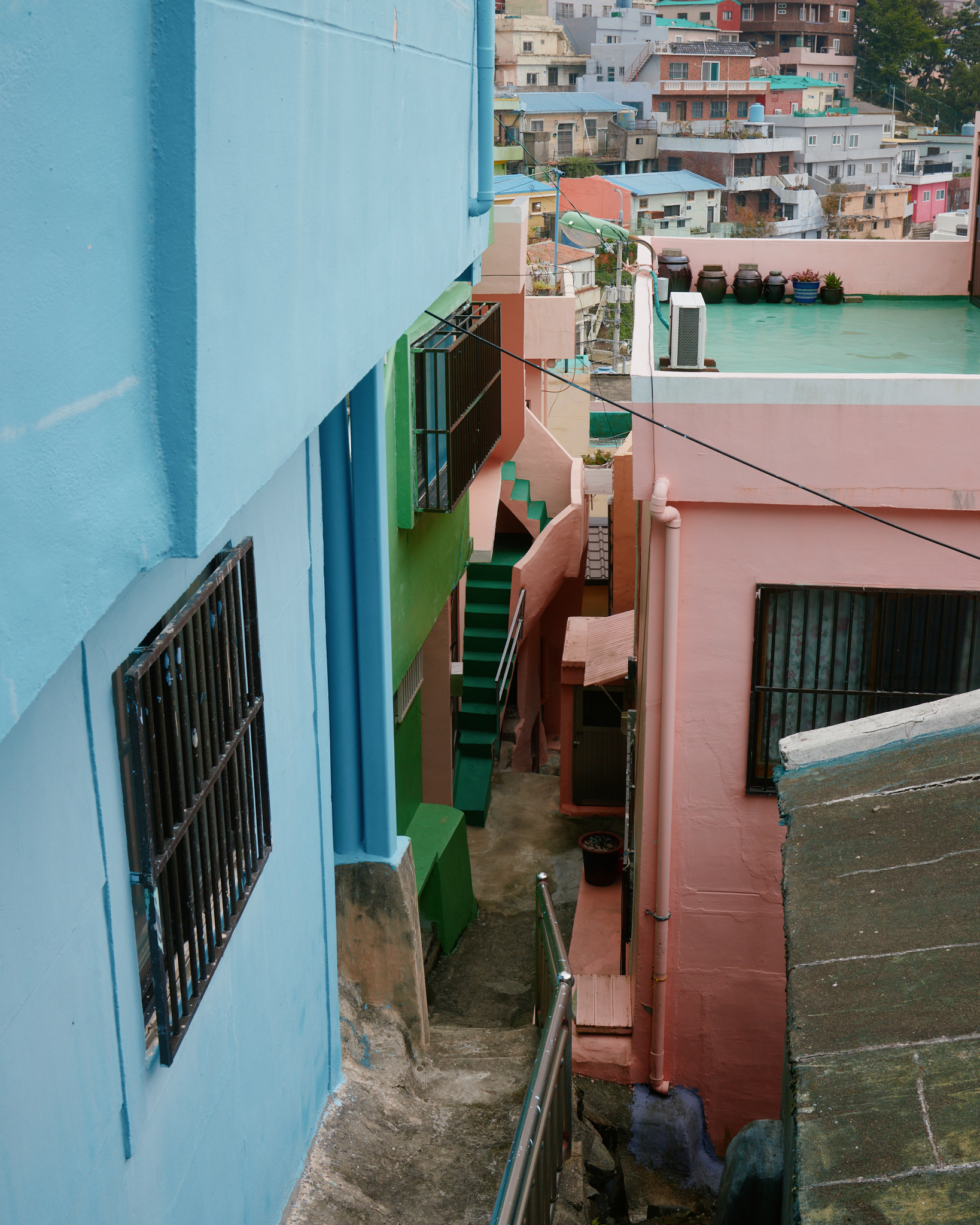24 hours on the K-beauty scene

Today, K-Beauty is a global phenomenon. You can find stylishly packaged Korean beauty products on the shelves in Selfridges, Sephora — even Superdrug. But none of it compares to immersing yourself in the world of Korean grooming in person.
If we only had 24 hours to show you what it’s all about, here’s how we’d do it.
What is K-Beauty?
On the most basic level, K-Beauty just means Korean skincare and beauty products. In reality, it’s so much more than that. Scouse brows, Kardashian-caliber contouring, Towie tans: these familiar trends are all anathema to K-Beauty. Korean skincare is all about leveraging a maximalist regime to minimalist effect. ‘Glass skin’ is the aim: luminous; dewy; radiating health and youth.
Sounds simple? It is not.
Your average cleanse/tone/moisturize routine is to a Sunday-morning stroll as the standard Korean multi-step regimen is to an Olympic gold-medal sprint. Or perhaps a marathon would be more appropriate, given the level of commitment involved.
We’re talking ten steps, twice daily, at a bare minimum — and at least as many products. These range from familiar cleansers and creams to peels, essences, serums, boosters, rollers, masks and more. (We won’t even get into the multitude of ‘tweakments’ and even full-on surgeries on the menu. That’s a can of worms for another day).
On top of this daily regimen, the truly skintelligent Korean will supplement with regular visits to the dermatologist for facial treatments and massages to supercharge their glow.
Finally, as important to the Korean skincare regime as these cutting-edge cosmetics and treatments is a much older form of pampering: the jjimjilbang. Like a Japanese onsen crossed with a Turkish hammam (with a few more consonants thrown in), this centuries-old culture of communal bathing and scrubbing is the bedrock of modern Korean beauty. Now you’ve had your primer, you’re ready to begin your K-Beauty makeover.

Step 1: Go shopping
Like pharmacies in France or pubs in England, beauty stores in South Korea are everywhere you look. It doesn’t really matter where you are, a single block can have four or five boutiques, and it’s all much, much cheaper than you’ll find at home.
The biggies to look out for are Olive Young, InnisFree, Nature Republic, Aritaum, and Skinfood. Within each of these is a wonderland of stylishly packaged potions and hi-tech whiz-bangery, helpfully subdivided into sections for sheet masks, beauty tools, and lotions/potions. And don’t worry — nearly all have enough English on the packaging to work out what you’re buying.
Sheet masks
Sheet masks are a long-standing staple of the Korean beauty regime. Incorporated once or twice a week, the idea is to give your skin an extra-concentrated boost — like an at-home mini-facial.
All you need to do is open the packet, line up the eye, nose and mouth holes, lay the mask on your face, and do your best Michael Myers for 10-20 minutes. The paper against your skin prevents the serum from evaporating, making for maximum absorption, maximum benefits (and maximum glass skin).
Lotions & potions
Now, if you thought you were ahead of the curve with your micellar water and retinol, get ready for a whole new world. Korean beauty products have all the scientific-sounding ceramides, niacinamides and alpha-hydroxy-whatsits you’ll find on Western ingredients lists — plus a whole lot more. Many of these ingredients have been used in Asian medicine for time out of mind. There’s mugwort, ginseng, fermented rice water and tiger grass — but then there’s also bee venom, pig collagen, starfish extract and (our favorite), snail mucin.
If it all sounds a bit ‘eye of newt, wing of bat’ for your liking, just take a glance at the flawless, dewy complexions of your fellow shoppers and you’ll be reaching for the snail slime before you know it.
Beauty tools
If Koreans look to their roots for their beauty ingredients, they look to the future for their gadgets. Cryo rubber masks, vibrating facial massagers, lymph-draining and face-shaping face rollers — and that’s just the tip of the iceberg. It’s a sci-fi beauty wonderland out there, and by the time we’ve written this there will be something new on the shelves. Have at it.
Top shopping tip: Don’t know where to begin? Turn to TikTok. K-Beauty is a breeding ground for viral trends, and there are zillions of glass-skinned influencers out there ready to show you what to buy and how to apply it. Be warned, though: lots of western cosmetic companies often use K-Beauty as a marketing term without any real connection to Korea – so if you’re looking for the real deal, read carefully!
Step 2: Visit a jjimjilbang
Now you’ve stocked up on products for your new regime, it’s time to prep the ground for your K-Beauty transformation at a jjimjilbang. A jjimjilbang is a traditional public bath, and they’re found in every town and city across the country. Koreans cleave as tightly to this centuries-old custom as they do to their sheet masks and hydrating eye gels — making time every week to visit the local jjimjilbang for a soak and a scrub.
The first step is to strip off and have a shower (bring your own products for this part). Now you’re ready to enter the baths. These are segregated by gender and offer a range of temperatures ranging from very cold to very hot, with a warm bath specifically for children and families. Just like in a Japanese onsen, it’s birthday suits only. Give it a go and you’ll be surprised at how quickly it stops feeling strange.
After your bath (if you’re brave enough) you can pay a little extra for a scrub. Still naked, you’ll be sloughed and scoured from head to toe by one of the jjimjilbang workers, leaving you as smooth and glowing as a newborn baby. It’s not for the fainthearted, but it’s incredibly invigorating — especially after a long-haul flight. If that sounds like torture to you, there are also oil massages, hair washing and other treatments on offer, after which you can join the locals as they relax, snack, nap and socialize in the communal area.

Post facial glow
Step 3: Get a facial
Your body’s been scoured to within an inch of its life, now we turn the focus to the face. As you’ll have gathered by now, Koreans take their skincare seriously, and that means dermatologists and beauticians are on practically every corner.
Our travel consultant, Sam, recently tried out a one-hour facial at O Hui and Whoo Spa in Myeongdong. The beautician put her legs in a massage machine and gave her a shoulder and head massage while cleansing, exfoliating and treating her face with various essences, masks and shaping tools.
Sam reported that it was so relaxing she fell asleep, before emerging clean-faced and glowing, with a newly defined jawline from all the rolling and sculpting. What’s not to love about that? Just like beauty products, spa-style treatments in Korea tend to be much cheaper than they are in the West, so a pampering facial doesn’t have to cost the world — and it’ll give your face an infusion of goodness to kick-start your K-Beauty routine.
Step 4: Glow!
Congratulations: you are on your way to radiant, clear, lit-from-within glass skin.
All this is really only scratching the surface of the wonderful world of Korean skincare. We can recommend our favorite jjimjilbangs, spas and shopping areas on any of our South Korea adventures. Try Essential South Korea if you’re on a budget, or Korean Wave for full pop-culture immersion.




